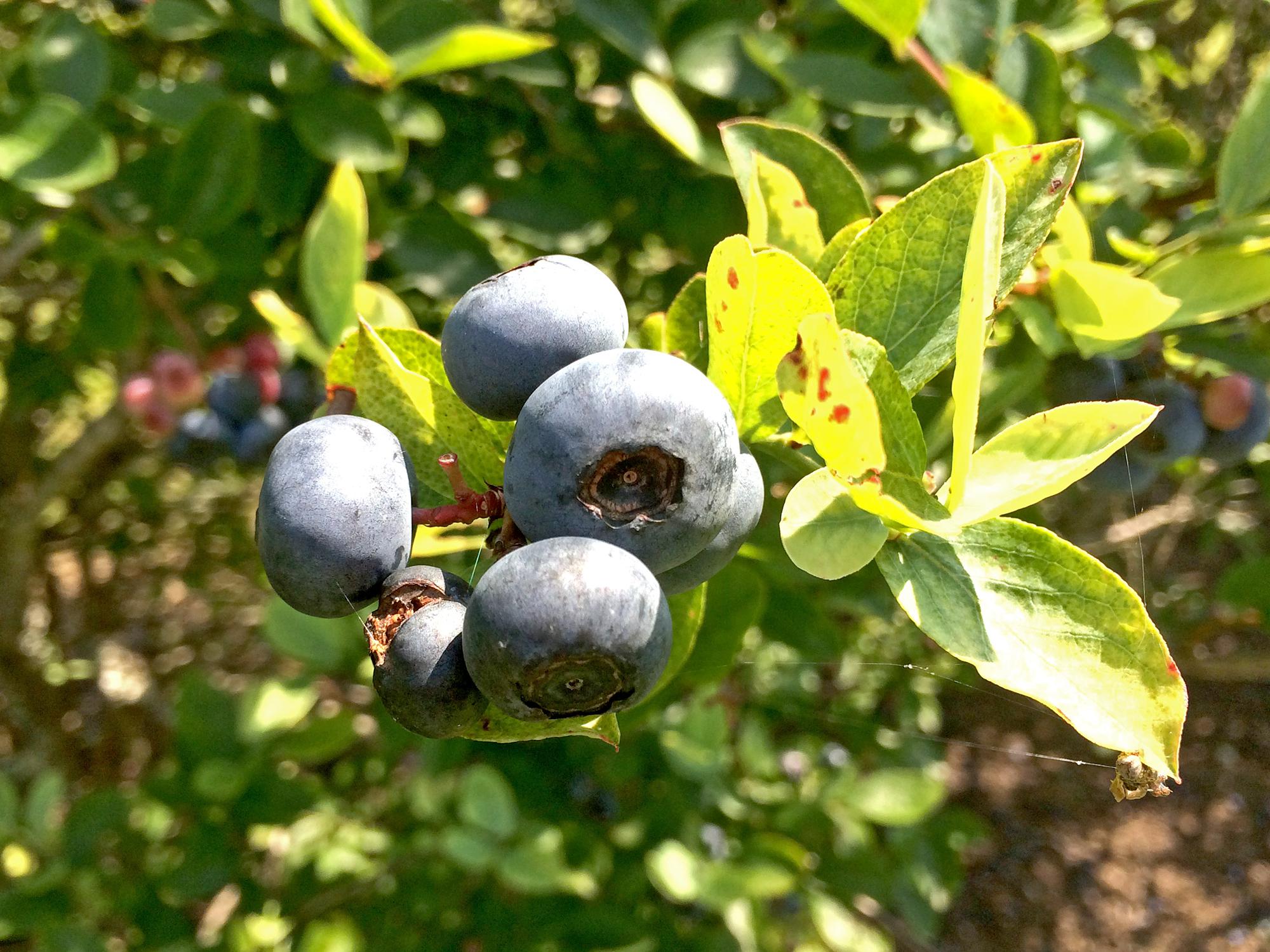Information Possibly Outdated
The information presented on this page was originally released on June 5, 2015. It may not be outdated, but please search our site for more current information. If you plan to quote or reference this information in a publication, please check with the Extension specialist or author before proceeding.
Rains can't dampen love for blueberries
POPLARVILLE, Miss. -- Frequent rains have complicated harvests and triggered some disease issues, but Mississippians’ love for blueberries will not be dampened.
Luis Monterde, a blueberry grower near Purvis, said it takes a lot of patience to grow blueberries.
“Nature keeps throwing us curves. The frequent rains have made it hard to have a consistent and effective spray program to control diseases,” Monterde said. “It hasn’t been a smooth harvest. All the rain is making a lot of berries split, and then we have to wait for dry weather to harvest. The recent sunny days have helped.”
For the week ending May 31, the Mississippi Agricultural Statistics Service reported 90 percent of the blueberry crop is in good to excellent condition. Mississippi has about 2,500 acres of commercial blueberries, primarily south of Interstate 20.
Eric Stafne is an associate fruit crops professor with the Mississippi State University Extension Service and the Mississippi Agricultural and Forestry Experiment Station based in Poplarville.
“Growers have been harvesting in south Mississippi for a few weeks,” he said. “Southern high-bush varieties, which typically produce first, are about finished, and rabbiteye varieties are just starting.”
Stafne said growers typically spray fungicides regularly to prevent diseases from developing.
“If growers see diseases, they either missed the timing or the control was ineffective,” he said. “Mummy berry and Exobasidium leaf and fruit spot are two diseases growers have battled more than normal this year.”
Stafne said Exobasidium is new and not widely seen outside of the Southeast. Most cases are in low spots with reduced airflow and high humidity, often beside a pond or other water source in an area with a lot of trees.
“Exobasidium has thrown a monkey wrench into blueberry disease management because the challenges are so new,” he said. “We don’t know where it comes from or how it spreads, but research is underway in North Carolina and Georgia.”
Jerry Hutto, a blueberry grower in Waynesboro, said prices for early berries ran around $24 for a 9.5-pound flat. Now that the season is in full swing, prices are $18-20 per flat.
“This year’s crop has been the best in a while. The crop came in earlier than normal, ahead of insect pressure,” he said. “Demand just keeps getting better every year.”




